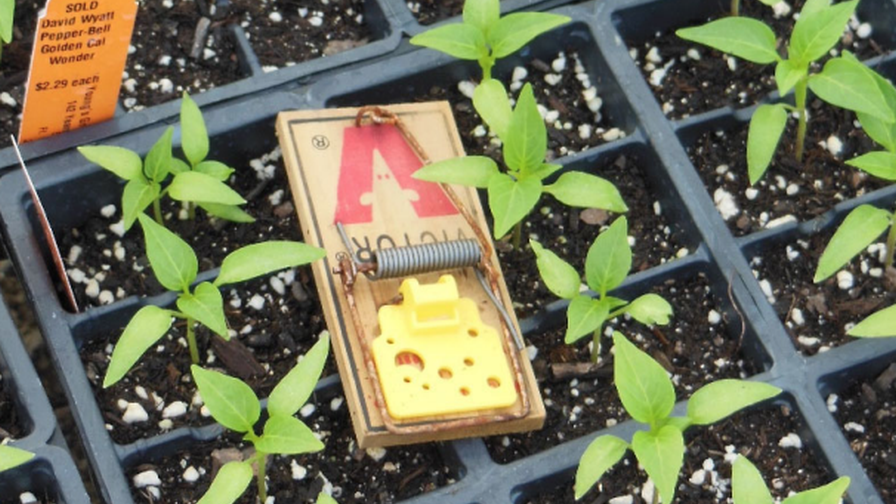How to Prevent Rodent Infestations in Your Greenhouse

Photo: W. Garrett Owen
Greenhouses can be the perfect habitat for rodents such as mice, rats, and volves. The warm environment offers protection from winter weather and predators and provides ample food supplies. Under these conditions, rodent populations can increase and be challenging to control; therefore, growers should be aware of the signs of rodent activity.
Common rodents that may be encountered in overwintering structures or greenhouses include the house mouse, deer mouse, white-footed mouse, brown rat, chipmunks, and voles. Mice and rats can cause damage by feeding on sown seed, germinated seeds, young transplants, bulbs, rhizomes, tubers, and even leaves and stems of maturing crops. In addition, these rodents can use damage to hardgoods and supplies by chewing holes into plastic pots and inserts, loose-filled bags of substrate, or cardboard boxes. Bulk or loose-filled bags of substrate create ideal locations for storing food (seed) reserves leading to removal of germinated seeds during production. Rodents will also create tunnels in bulk bagged substrate or under containers placed at ground level or runways between containers and flats.
Chipmunks and voles are less likely to be found in greenhouses; however, they are commonly found in overwintering structures among herbaceous perennials and nursery stock. Chipmunks and voles often feed by chewing on young transplants or emerging spring growth as well as on roots, bulbs, tubers, and rhizomes.
In a recent e-GRO alert, The Ohio State University’s Garrett Owen highlights how rodent control in overwintering structures and greenhouses begins with exclusion. Greenhouse and nursery growers should first identify entry points. Mice can squeeze through cracks, gaps, and holes about ¼-inch in size. Therefore, inspect growing environments and fix holes in polyfilm or polycarbonate and ensure door sills, louvers, and knee wall or baseboards are gap free. This also prevents cold air infiltration into the growing environment and eliminates the likelihood of chilling or freeze injury on crops. If gaps are found along the knee wall or baseboards of overwintering structures or greenhouses, then consider installing metal screening or mesh hardware cloth around the outside perimeter. Secure the screening to the knee wall or baseboards and bend the bottom edge away from the growing structure, and if possible, bury or secure by installing groundcover or sod pins. This technique will help mitigate tunneling or entry into the overwintering structure and greenhouse.
Learn more in the original e-GRO alert here.









